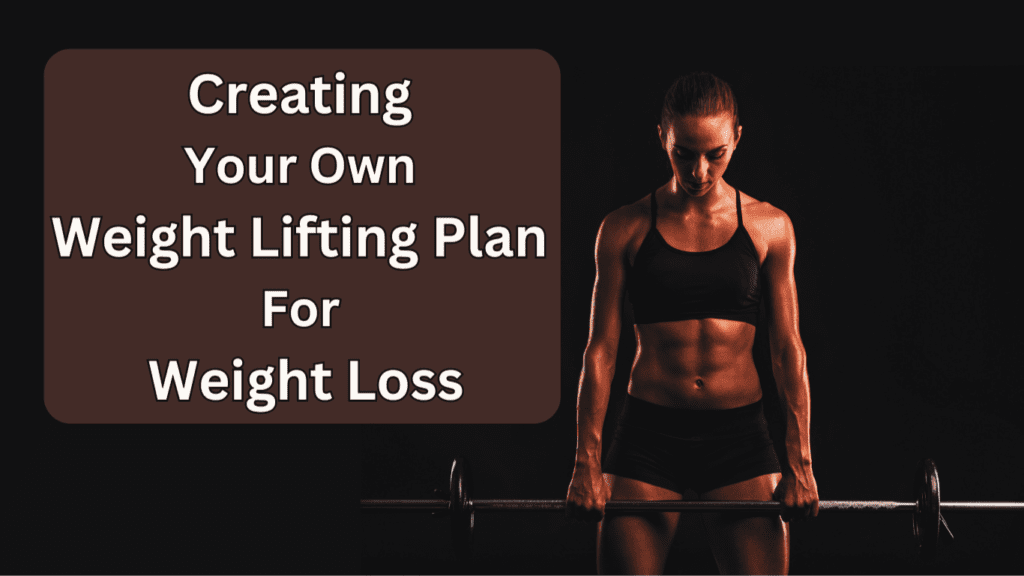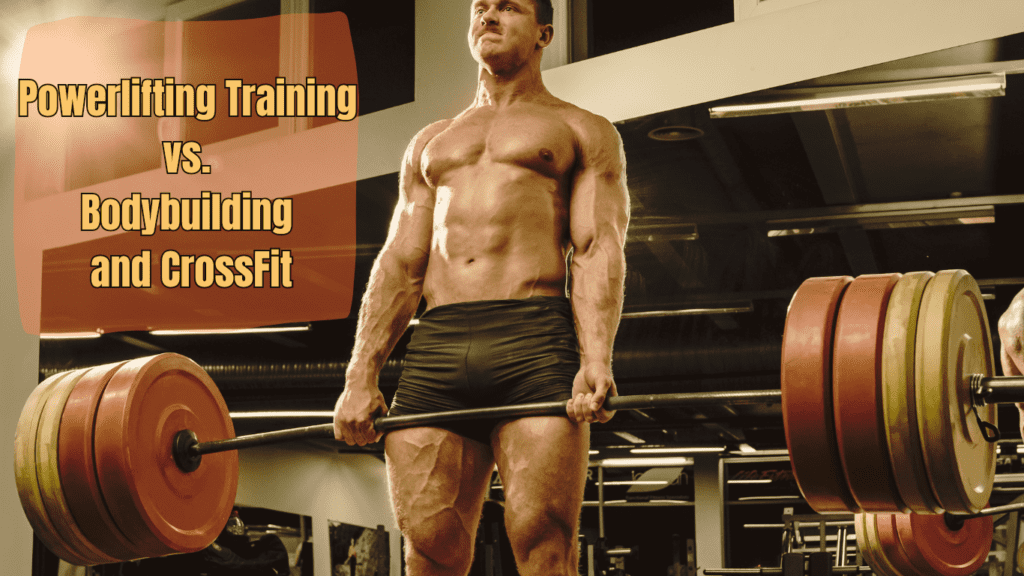A Weight Lifting Plan for Weight Loss Victory
Are you ready to pump some iron and shed those pounds? If you’ve been contemplating weight loss strategies, you might have stumbled upon the idea of incorporating weight lifting into your routine. Yes, you heard it right—weight lifting isn’t just about bulking up; it can also be a powerful tool for shedding those stubborn pounds. Welcome to the world of weight lifting plan for weight loss!
Now, let’s debunk a common misconception right off the bat: Weight lifting isn’t reserved solely for bodybuilders or those aiming to pack on massive muscle mass. In fact, it can be an incredibly effective method for torching fat and sculpting a leaner physique. So, if you’ve been shying away from the weight room, thinking it’s not for you, it’s time to reconsider.

Crafting a personalized weight lifting plan for weight loss is like tailoring a suit—it needs to fit you perfectly. One size does not fit all in the realm of fitness, and your approach to weight lifting should reflect your individual goals, preferences, and body type. That’s where the magic happens—when you design a plan that’s uniquely suited to your needs.
Subscribe And Get Our Free E-Book:Unlocking The Power Of Nutrition-Supplements, Substitutes, and Superfoods!
But before we dive into the nitty-gritty of designing your weight lifting plan, let’s take a moment to understand the science behind this powerful fat-burning tool. You see, when you engage in resistance training—such as lifting weights—you’re not just building muscle; you’re also revving up your metabolism and torching calories long after you’ve left the gym. That’s right—weight lifting can turn you into a fat-burning machine, even while you’re binge-watching your favorite Netflix series.
Now, let’s talk strategy. When it comes to crafting your weight lifting plan for weight loss, exercise selection is key. You’ll want to focus on compound movements that engage multiple muscle groups simultaneously, such as squats, deadlifts, and bench presses. These exercises not only maximize calorie burn during your workout but also promote muscle growth, which can further boost your metabolism in the long run.
Of course, no weight lifting plan would be complete without addressing the elephant in the room: nutrition. You can lift all the weights in the world, but if your diet is filled with processed junk and sugary treats, you’re unlikely to see the results you desire. That’s why it’s crucial to pair your weight lifting efforts with a balanced, nutrient-rich diet that supports your weight loss goals. Think lean proteins, colorful fruits and veggies, whole grains, and healthy fats—fuel that nourishes your body and powers your workouts.
But wait, there’s more! Don’t forget about the importance of rest and recovery in your weight lifting plan for weight loss. Your muscles need time to repair and grow stronger after challenging workouts, so be sure to incorporate rest days into your routine and prioritize quality sleep. After all, there’s no shame in hitting the snooze button when it means better gains in the gym.
Understanding The Science Behind Pumping Iron and loosing Pounds
So, you’ve decided to embark on your weight loss journey, and you’ve heard that weight lifting could be your golden ticket to a leaner, stronger physique. But what’s the deal with weight lifting, and how does it actually help you shed those stubborn pounds?
Science Behind Weight Lifting for Weight Loss
| Scientific Concept | Explanation | Additional Information |
|---|---|---|
| Metabolic Boost | Weight lifting increases muscle mass, which boosts metabolism. Muscle tissue requires more energy to maintain than fat tissue, leading to higher calorie expenditure. | Resistance training also enhances insulin sensitivity, improving glucose regulation and reducing the risk of metabolic disorders such as type 2 diabetes. |
| Afterburn Effect | Weight lifting causes micro-tears in muscle fibers, leading to elevated post-exercise oxygen consumption (EPOC), or “afterburn,” resulting in continued calorie burn. | The duration and magnitude of the afterburn effect depend on factors such as exercise intensity, duration, and individual fitness level, with high-intensity workouts generally producing a more pronounced effect. |
| Energy Expenditure | Weight lifting burns calories during exercise and creates a calorie deficit, prompting the body to use stored fat for energy, aiding in weight loss over time. | Combining weight lifting with cardiovascular exercise can further increase calorie expenditure and enhance fat loss. Interval training, in particular, is effective for maximizing calorie burn and improving cardiovascular health. |
| Progressive Overload | Gradually increasing weight or intensity challenges muscles, stimulating growth and adaptation, ensuring continued progress in weight loss and muscle development. | Progressive overload can be achieved through various methods, including increasing weight, adjusting repetitions and sets, shortening rest periods, and incorporating advanced training techniques such as drop sets or supersets. |
| Muscle Growth and Fat Loss | Building muscle through weight lifting promotes fat loss as muscle tissue burns more calories at rest, contributing to overall weight loss and improved body composition. | Muscle is denser than fat, so while it may not lead to significant decreases in scale weight, increased muscle mass can lead to visible changes in body shape and size, creating a leaner and more toned appearance. |
Well, let me break it down for you. When you hit the gym and start lifting weights according to your meticulously crafted weight lifting plan for weight loss, you’re not just building muscle—you’re also boosting your metabolism. You see, muscle tissue is metabolically active, meaning it requires energy to maintain itself. So, the more muscle you have, the more calories your body burns at rest. It’s like having a little army of calorie-burning warriors inside you, working tirelessly to keep you lean and mean.
But that’s not all. Weight lifting also triggers something called the afterburn effect. Picture this: you finish a killer lifting session, and as you strut out of the gym feeling like a boss, your body is still hard at work. That’s because weight lifting causes small micro-tears in your muscle fibers, which your body then repairs during the recovery process. This repair work requires energy, and lots of it, which means your metabolism stays elevated long after you’ve left the gym. It’s like getting a bonus calorie burn while you kick back and relax—talk about efficiency!
Now, let’s talk energy expenditure. When you lift weights according to your weight lifting plan for weight loss, you’re not just burning calories during your workout—you’re also creating a calorie deficit that can contribute to weight loss over time. You see, your body needs fuel to power through those squats, deadlifts, and bicep curls, and if you’re not consuming enough calories to meet that demand, your body will tap into its fat stores for energy. It’s like raiding the pantry for snacks, except instead of chips and cookies, your body is munching on stored fat to fuel your workouts.
But here’s the kicker: to keep seeing results, you’ve got to keep challenging yourself. That’s where progressive overload comes into play. This fancy term simply means gradually increasing the weight or intensity of your workouts over time to keep pushing your muscles to adapt and grow. Think of it like leveling up in a video game—you’ve got to keep raising the stakes if you want to conquer the next boss (or, in this case, your weight loss goals). So, don’t be afraid to grab those heavier dumbbells or crank up the resistance on the leg press machine. Your muscles will thank you for it.
So, there you have it—the science of weight lifting for weight loss, served up with a side of humor. Building muscle and burning fat doesn’t have to be a boring, monotonous affair. With the right attitude and a sprinkle of laughter, you’ll be well on your way to achieving the body of your dreams.

Building Your Personalized Weightlifting Plan for Effective Weight Loss
Alright, let’s roll up our sleeves and dive into the exciting world of designing your very own weight lifting plan for weight loss! But before we jump into the nitty-gritty details, let’s set the stage and make sure we’re all on the same page.
Enhanced Weight Lifting Plan for Weight Loss
Practical Tips and Information
| Component | Description | Practical Tips and Information |
|---|---|---|
| Exercise Selection | Choose compound movements that engage multiple muscle groups simultaneously for maximum calorie burn and muscle growth. | Experiment with different variations of compound exercises to keep workouts challenging and engaging. |
| Examples: Squats, Deadlifts, Bench Press, Lunges, Pull-Ups, Rows | Incorporate bodyweight exercises like push-ups and dips for variety and to improve functional strength. | |
| Nutrition | Focus on a balanced, nutrient-rich diet to support weight loss and muscle recovery. | Plan meals ahead of time to ensure you have nutritious options readily available, reducing the temptation for unhealthy snacks. |
| Prioritize lean proteins, colorful fruits and veggies, whole grains, and healthy fats. | Experiment with different meal timing strategies to optimize energy levels and recovery. | |
| Rest and Recovery | Incorporate rest days into your routine to allow muscles time to repair and grow stronger. Prioritize quality sleep for recovery. | Practice stress-reducing activities like yoga or meditation to enhance recovery and reduce cortisol levels. |
| Hydrate adequately before, during, and after workouts to support optimal performance and recovery. | ||
| Progressive Overload | Continually challenge yourself by increasing weight, reps, or sets to stimulate muscle growth and adaptation. | Incorporate periodization into your training program, alternating between phases of high intensity and recovery. |
| Aim for gradual progression to avoid plateaus and keep seeing results. | Focus on form and technique to ensure safety and effectiveness, particularly when increasing weight. | |
| Customization | Tailor your plan to fit your preferences, lifestyle, and available resources. Experiment to find what works best for you. | Find a workout buddy or join fitness classes to stay motivated and accountable. |
| Tracking Progress | Keep a workout journal to record exercises, weights, reps, and progress measurements. Monitor changes in body composition. | Utilize fitness apps or wearable devices to track workouts, monitor progress, and stay motivated. |
| Track strength gains to ensure continual improvement and adaptation. | Take regular progress photos to visually track changes in physique and stay motivated. | |
| Making Adjustments | Be flexible and willing to make adjustments to your plan if progress stalls. Experiment with different strategies to find what works. | Consider seeking guidance from a personal trainer or fitness professional for personalized advice and adjustments. |
| Listen to your body and adjust workout intensity or volume as needed to prevent overtraining and injury. | ||
| Consistency | Stay committed to your plan, remain patient, and trust the process. Consistency is key to long-term success. | Set realistic goals and celebrate small victories along the way to maintain motivation and momentum. |
This enhanced chart provides practical tips and information to complement each aspect of the weight lifting plan for weight loss, empowering readers to optimize their fitness journey effectively.
First things first, let’s talk goals. What are you hoping to achieve with your weight lifting plan for weight loss? Are you looking to drop a few pounds, sculpt some killer muscles, or maybe just boost your overall health and fitness? Whatever your goals may be, it’s important to make them specific, measurable, achievable, relevant, and time-bound—aka SMART goals. So, grab a pen and paper (or open up your favorite note-taking app) and jot down exactly what you want to accomplish with your weight lifting journey.
Next up, let’s assess where you’re starting from. What’s your current fitness level? Do you have any injuries or limitations that we need to take into account? Are you brand new to the world of weight lifting, or are you a seasoned pro looking to take your workouts to the next level? Understanding your starting point is crucial for designing a plan that’s tailored to your needs and abilities.
Now, let’s talk shop—aka designing your weight lifting plan. When it comes to crafting a plan that’s just right for you, there are a few key principles to keep in mind: frequency, intensity, volume, and progression.
Frequency refers to how often you’ll be hitting the gym for your weight lifting sessions. Ideally, you’ll want to aim for at least 3-4 sessions per week to see optimal results. However, if you’re just starting out or have a busy schedule, don’t be afraid to start slow and gradually increase your frequency over time.
Intensity is all about how hard you’re working during your weight lifting sessions. This can be measured by factors like the amount of weight you’re lifting, the number of reps and sets you’re completing, and the rest periods between exercises. Remember, it’s important to challenge yourself without overdoing it—listen to your body and adjust your intensity accordingly.
Volume refers to the total amount of work you’re doing during each weight lifting session. This includes factors like the number of exercises you’re performing, the number of sets and reps for each exercise, and the overall duration of your workout. Again, it’s important to find the right balance here—too much volume can lead to burnout and overtraining, while too little may not be enough to see results.
Finally, progression is the key to long-term success. As you become stronger and more experienced, you’ll need to continually challenge yourself by increasing the weight, reps, or sets of your exercises. This gradual progression is what keeps your muscles guessing and ensures that you continue to see improvements over time.

Now, let’s talk customization. One of the best things about designing your own weight lifting plan for weight loss is that you have the freedom to tailor it to your individual preferences, lifestyle, and available resources. Maybe you prefer working out in the comfort of your own home rather than hitting the gym, or perhaps you have a busy schedule that requires shorter, more efficient workouts. Whatever the case may be, don’t be afraid to experiment and find what works best for you.
So, there you have it—a crash course in designing your personalized weight lifting plan for weight loss. With a clear set of goals, an understanding of your starting point, and a solid grasp of the key principles of designing a plan, you’ll be well on your way to achieving the body of your dreams.
Selecting Exercises for Your Plan
Let’s dive into the exciting world of selecting the perfect weight lifting exercises for your weight loss journey! When it comes to shedding those extra pounds and sculpting a leaner physique, choosing the right exercises is key. But fear not, my friend, because I’m here to guide you through the process with a sprinkle of humor and a whole lot of know-how.
First things first, let’s talk about compound exercises. These bad boys are the heavy hitters of the weight lifting world, targeting multiple muscle groups at once for maximum calorie burn and efficiency. Think of them as the multitaskers of the gym—why work one muscle when you can work several at the same time?
Take squats, for example. Not only do they target your quads, hamstrings, and glutes, but they also engage your core and lower back for added stability. It’s like getting a full-body workout in one simple movement—talk about bang for your buck!
How To Burn More Calories Lifting Weights Video
Then there’s the deadlift, the king of all exercises. This powerhouse movement works virtually every muscle in your body, from your legs and back to your arms and shoulders. It’s like hitting the gym, the spa, and the chiropractor all in one go—what’s not to love?
But wait, there’s more! Lunges are another fantastic compound exercise that torches calories while sculpting your legs and glutes. And let’s not forget about the bench press, which not only strengthens your chest, shoulders, and triceps but also engages your core for stability. It’s like a push-up on steroids—minus the illegal substances, of course.
Now, let’s talk about additional isolation exercises. While compound movements should form the foundation of your weight lifting plan for weight loss, there’s still plenty of room for targeted work to address specific muscle groups and weaknesses. Whether you’re looking to carve out those six-pack abs with some crunches or sculpt your biceps with some curls, isolation exercises can help you fine-tune your physique and achieve your goals.
But remember, variety is the spice of life—and the key to avoiding boredom and plateaus in your workouts. So don’t be afraid to mix things up and experiment with different exercises to keep your body guessing and your muscles growing.
Selecting the right weight lifting exercises for weight loss is all about finding the perfect balance between compound movements that engage multiple muscle groups and isolation exercises that target specific areas of the body. By incorporating a mix of both into your weight lifting plan, you’ll not only burn more calories but also sculpt a leaner, stronger physique.
Nora’s Nutrition Adventure in Her Weight Lifting Plan for Weight Loss
Alright, let’s meet Nora, our lovable but slightly clueless weightlifting enthusiast. Nora’s been hitting the gym like a champ, following her meticulously crafted weight lifting plan for weight loss, and she’s been seeing some great progress. But there’s just one problem—she’s completely lost when it comes to nutrition. Cue the dramatic music!
Nora, bless her heart, has been living off protein shakes and kale smoothies, thinking she’s doing everything right. But little does she know, proper nutrition is just as important as hitting the weights when it comes to achieving her weight loss goals. So, let’s give Nora a crash course in the wonderful world of nutrition, shall we?
First up, let’s talk about macronutrients—aka the big three: protein, carbs, and fat. These are the building blocks of a balanced diet, and each plays a crucial role in supporting weightlifting performance and accelerating fat loss.
Now, Nora, listen up, because this part’s important: protein is your new best friend. Not only does it help repair and rebuild your muscles after those killer lifting sessions, but it also keeps you feeling full and satisfied, making it easier to stick to your weight lifting plan for weight loss. So, think chicken breasts, eggs, Greek yogurt—heck, even a good old-fashioned peanut butter sandwich. Just make sure you’re getting enough protein in your diet to support those gains.
But that’s not all—carbs are also your friend, believe it or not. Contrary to popular belief, carbs aren’t the enemy when it comes to weight loss. In fact, they’re your body’s preferred source of energy, especially during intense workouts like weightlifting. So, don’t be afraid to load up on healthy carbs like fruits, veggies, whole grains, and sweet potatoes. Your muscles will thank you for it.
And last but not least, we’ve got fat. Yes, fat. Despite its bad rap, fat is an essential nutrient that plays a vital role in hormone production, brain function, and yes, even weight loss. But not all fats are created equal, so stick to healthy fats like avocados, nuts, seeds, and olive oil, and steer clear of the processed stuff.
Now, let’s talk practical tips for creating a balanced diet that supports both weightlifting performance and fat loss. Nora, my dear, it’s time to ditch the fad diets and get back to basics. Focus on eating whole, nutrient-dense foods, and aim for a balance of protein, carbs, and fat at each meal. And don’t forget to stay hydrated—water is your best friend when it comes to staying energized and focused during your workouts.
But here’s the kicker, Nora: consistency is key. You can’t expect to see results overnight, so stick to your weight lifting plan for weight loss, fuel your body with the right nutrients, and be patient. Rome wasn’t built in a day, and neither is a killer physique.
Tracking Progress and Making Adjustments in Our Weight Lifting Plan for Weight Loss
Alright, folks, it’s time to check in with our friend Nora and see how she’s doing on her weight lifting plan for weight loss. Nora’s been hitting the gym like a boss, following her plan to a T, but she’s starting to wonder—is it working? Cue the dramatic music again!
First things first, let’s talk about tracking progress. Nora, my dear, it’s time to whip out that trusty notebook and start jotting down your workouts, nutrition, and progress measurements regularly. Not only will this help you stay accountable, but it’ll also give you valuable insights into what’s working and what’s not.
Now, let’s talk body composition. Nora, it’s not just about the number on the scale—it’s about what that number represents. So grab a tape measure and start tracking changes in your waist, hips, thighs, and arms. Trust me, these measurements can be a much better indicator of progress than the scale alone.
But wait, there’s more! Strength gains are another crucial piece of the puzzle. So grab those dumbbells and start tracking your progress in the gym. Can you lift more weight than you could last week? Are you able to bang out more reps with ease? These are all signs that your weight lifting plan for weight loss is paying off.
Now, let’s talk adjustments. Nora, my dear, it’s time to put on your detective hat and start sleuthing. If you’re not seeing the results you want, it might be time to shake things up a bit. Maybe you need to increase the intensity of your workouts, or perhaps you need to tweak your nutrition plan to better support your goals. Whatever the case may be, don’t be afraid to experiment and make adjustments as needed.
And remember, Nora, progress isn’t always linear. There will be ups and downs along the way, but as long as you stay consistent and keep pushing forward, you’ll get there in the end. So keep tracking, keep tweaking, and above all, keep believing in yourself. You’ve got this!
So there you have it—Nora’s journey to tracking progress and making adjustments in her weight lifting plan for weight loss, served up with a side of humor and a sprinkle of wisdom. Remember, folks, the key to success is staying flexible and adapting to change. Now go forth, my dear Nora, and conquer the world—one workout and adjustment at a time!
Final Words on Our Weight Lifting Journey for Weight Loss
Alright, folks, we’ve reached the end of our weight lifting plan for weight loss journey, and what a ride it’s been! From pumping iron with Nora to diving into the science of muscle growth and fat loss, we’ve covered it all. But before we say our final goodbyes, let’s take a moment to reflect on everything we’ve learned—and maybe share a laugh or two along the way.
First off, let’s give a round of applause to Nora, our fearless weightlifting warrior. She may have started out a bit clueless when it came to nutrition, but she’s come a long way since then. With a little help from her friends (that’s you, dear readers!), she’s managed to craft a weight lifting plan for weight loss that’s as effective as it is fun.
Now, let’s talk about you, dear readers. Whether you’re a seasoned weightlifting pro or a newbie just dipping your toes into the world of fitness, I hope you’ve found something valuable in our journey together. Maybe you’ve picked up a new exercise or two to try at the gym, or perhaps you’ve been inspired to take a closer look at your own nutrition plan. Whatever the case may be, I want to hear from you! Share your thoughts, experiences, and even your favorite weightlifting memes in the comments below.
And hey, while you’re at it, why not subscribe to our website, Fitness Rats Universe? We’ve got tons of tips, tricks, and workouts to help you reach your fitness goals, plus plenty of laughs along the way. So hit that subscribe button and join the Fitness Rats family—you won’t regret it!
Alright, folks, it’s time to wrap things up. Thanks for joining us on this wild weightlifting adventure, and remember—no matter where you are on your fitness journey, you’re never alone. So keep lifting, keep laughing, and above all, keep being awesome. Until next time, stay sweaty, my friends!


